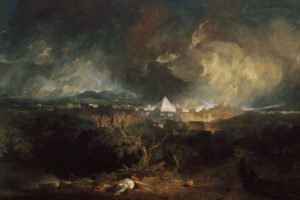Last week, we discussed the distinction between body and soul, and the need to develop each in its own way. The pure soul must be freed of the kelipot that encapsulate and suppress it, while the animalistic body must be refined and strengthened, both externally and internally. We are reminded of this again in this week’s parasha, Ekev, where Moses famously poses “What does Hashem, your God, ask of you?” The answer is to fear God, walk in His ways, to love Him, and to serve Him with all of one’s heart and soul, as well as to fulfill His mitzvot. We are then told to metaphorically “circumcise our hearts” (Deuteronomy 10:16). This, too, is an allusion to the kelipot, those spiritual “foreskins” that must be removed.
What we didn’t discuss last week is how exactly this process of refinement is accomplished. Aside from the general directive to fulfill mitzvot, what specifically needs to be done at each level of spiritual development? How does a person know whether they are in the “nefesh” stage, or the “ruach” stage? Should one focus on “neshamah”, or are they ready for “chayah”? This is what we will examine this week. Continue reading

